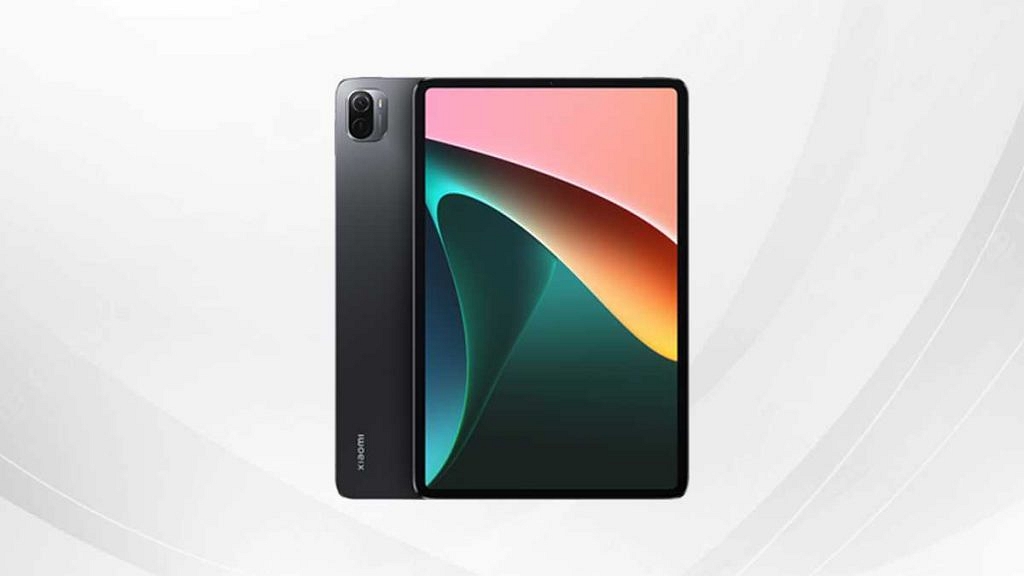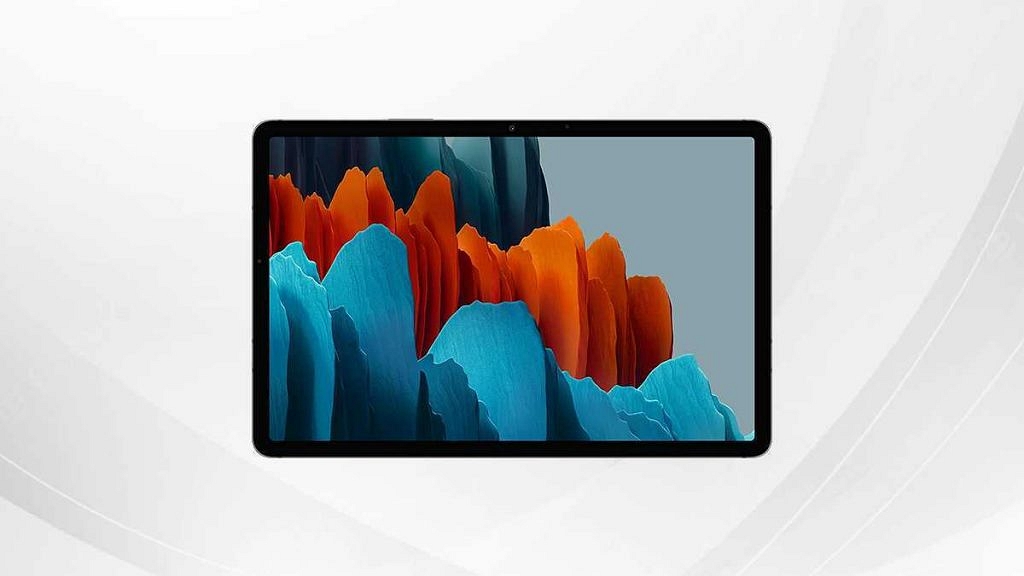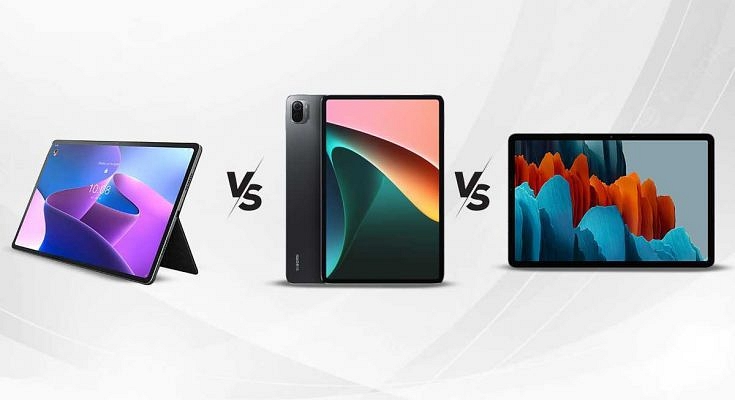The Android tablet market is constantly getting upgraded across the global markets. We not only have options from established players in the tablet space but also smartphone OEMs. We have seen several new tablets debuting in the Indian market in recent times. The most recent tablet that has been added to the shelves in the Indian market is the Tab P12 Pro from Lenovo. It is a premium mid-tier Android tablet that is packed with the Snapdragon 870 processor, dual rear camera module, and fast charging support.
The Lenovo Tab P12 Pro is a high-end tablet that wouldn’t burn a hole in your pockets. But it isn’t the only premium tablet in the Indian market. Several other options offer a premium range chipset, multiple cameras, and fast charging battery capacity. Amongst the top rivals of the Lenovo Tab P12 Pro in India are the Xiaomi Pad 5 and the Samsung Galaxy Tab S7. What are the primary differences in terms of hardware and pricing between the Lenovo Pad P12 Pro, Xiaomi Pad 5, and the Samsung Galaxy Tab S FE? Read this comparison article to know:
Lenovo Tab P12 Pro Vs Xiaomi Pad 5 Vs Galaxy Tab S7 FE: Display Specifications
The Lenovo Tab P12 Pro is one of the biggest Android tablets you can buy in India with its 12.6-inch display. The latest Lenovo Tab P series Android tablet uses an AMOLED screen that supports a 120Hz refresh rate and has a 1600 x 2560 pixels resolution. The big AMOLED screen on the Lenovo Tab P12 Pro also supports HDR10+ certification and Dolby Vision.

The Xiaomi Pad 5 competes against the Lenovo Tab P12 Pro with an LCD panel. The screen size is slightly smaller on the Xiaomi tablet, i.e, 11-inches. The display on Xiaomi’s premium mid-range tablet also supports a 120Hz refresh rate and 2K screen resolution of 1600 x 2560 pixels. The Xiaomi tablet also supports HDR10 and Dolby Vision for enhanced visuals.
The Samsung Galaxy Tab S7 has a TFT LCD screen that supports the same 2K screen resolution of 1600 x 2560 pixels. The display panel on the Samsung Galaxy Tab S7 FE is massive as the Lenovo tablet. It measures 11-inches and is suitable for watching videos on the go. Out of all three tablet models, the Lenovo Tab P12 Pro has the best display specifications and features followed by the Xiaomi Pad 5 and the Galaxy Tab S7.
Lenovo Tab P12 Pro Vs Xiaomi Pad 5 Vs Galaxy Tab S7 FE: Camera Specs Comparison
For imaging, the Lenovo Tab P12 Pro employs a dual-lens rear camera setup. It is amongst the handful of Android tablets that are packed with a multiple-camera setup at the back. The primary camera on the Lenovo Tab P12 Pro is a 13MP wide-angle lens which is aided by a 5MP sensor (ultrawide). The premium Lenovo tablet is capable of shooting 4K@30fps and 1080p@30fps videos. The large main camera at the Tab P12 Pro’s back panel will be able to capture a good amount of clarity with each click.

The Xiaomi Pad 5’s optical setup also comprises a large 13MP main camera at the back with an f/2.0 aperture. However, unlike the Lenovo tablet, the Xiaomi Pad 5 has a single camera sensor at the rear as well as the front. The Tab P12 Pro’s back camera is also capable of recording 1080p@30fps and 4K@30fps videos. The camera output offered by the Xiaomi Pad series tablet will be decent if you are capturing images in broad daylight.
The Samsung Galaxy Tab S7 goes up against the remaining two tablets in this list with a dual rear camera module. The specifications are identical to the Lenovo Tab P12 Pro where the main sensor is a 13MP lens with an f/2.0 aperture. The primary camera on the Galaxy Tab S7 is combined with a 5MP secondary ultrawide-angle sensor with an f/2.2 aperture. If the camera is one of your preferences when buying a new tablet, both Lenovo Tab P12 Pro and the Samsung Galaxy Tab S7 will make the best fit for you.
Lenovo Tab P12 Pro Vs Xiaomi Pad 5 Vs Galaxy Tab S7: Chipset, Configuration, UI Comparison
Starting with the Lenovo Tab P12 Pro, the premium range tablet is packed the Qualcomm’s premium Snapdragon 870 5G processor. The octa-core chipset is accompanied by Adreno 650 GPU and 6GB/8GB RAM configuration to take care of all the multitasking. The storage option offered by the Lenovo tablet is also dual including 128GB and 256GB. The Lenovo Tab P12 Pro is fully capable of handling all kinds of tasks without any hassle.
The Xiaomi Pad 5 doesn’t compromise on the chipset and configuration department despite the affordable price tag. This Android tablet is packed with the octa-core Snapdragon 860 chipset which is built on a 7nm fabrication process and has 5G network connectivity. This premium range Qualcomm processor has Adreno 640 GPU support and is further clubbed with 6GB RAM and 128GB/ 256GB storage configuration.
As for the Galaxy Tab S7, Samsung has also used a flagship-grade Qualcomm chipset. This high-end Samsung Android tablet is packed with the Snapdragon 865 chipset which is built using the 7nm+ fabrication and has Adreno 650 GPU support. The configuration for this tablet is 6GB and 8GB RAM combined with 128GB/ 256GB/ 512GB storage option. All three tablets come with expandable microSD card support.
As for the firmware, the Lenovo Tab P12 Pro and the Xiaomi Pad 5 are pre-installed with Android 11 OS topped with a custom user interface on top. On the other hand, the Galaxy Tab S7 has the dated Android 10 OS pre-loaded.
Lenovo Tab P12 Pro Vs Xiaomi Pad 5 Vs Galaxy Tab S7: Battery And Fast Charging Capacity
The Lenovo Tab P12 Pro packs a beefy 10,200 mAh battery that gets 45W fast charging technology. The large battery capacity on the Lenovo Tab P12 Pro takes around three hours for a full recharge. On the other hand, the Xiaomi Pad 5 tablet has a smaller 8,720 mAh battery unit that gets 33W fast charging support. Lastly, the Samsung Galaxy Tab S7 uses an 8,000 mAh battery unit which gets 45W fast charging technology.
